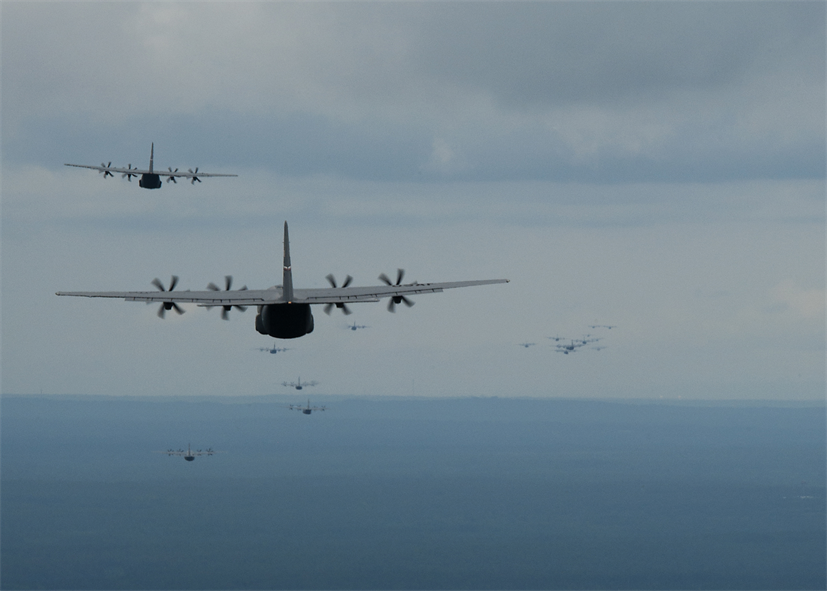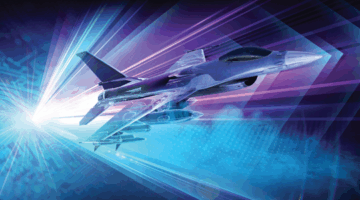
WASHINGTON: Senate appropriators added $760 million to the Air Force’s budget to buy eight more C-130Js for Air National Guard and Reserve operations. The SAC move practically guarantees an increase to the fleet, since their House counterparts added two more aircraft ($185 million) in their version of the bill.
The SAC asked for a cost study of a replacement program, and “encouraged” Air Force Secretary Barbara Barrett “to program and budget for recapitalization of the National Guard’s 10 operational LC–130H aircraft in future year’s budget cycles.” The LC-130H planes, built by Lockheed Martin, are equipped with skis to allow operations in the ice and snow at the polar regions.
“The C-130 has been the most plus-upped aircraft in history,” Teal Group’s Richard Aboulafia said in an email today. “For many decades, the services have seldom requested more than a few, if any, because they know Congress will almost always add a few to the budget.”

How many, of course, will have to be worked out in the House-Senate conference on the 2021 spending bill. That meeting is not yet scheduled, and given the election turmoil may not be before the turn of the year, said Cowen Washington Research Group’s Roman Schweizer in an analysis of the Senate Appropriations Committee bill, released last Tuesday.
“We would normally expect a quick conference with the House and passage of a massive omnibus appropriations bill by the end of the year. The disputed presidential election, Senate runoffs in Georgia and an unresolved COVID-19 relief deal cloud the outlook too heavily to make a decent prediction at this point,” Schweizer reported.
The SAC also demanded that the Air Force put together a comprehensive road map for the C-130 cargo fleet through 2026, including the desired mix of C-130Js and older model C-130Hs as well as modernization plans.
“Since the MC-130J and HC-130J procurement programs are winding down, it’s up to Congress to keep the program going, both with vanilla C-130Js and other special mission variants, like the LC-130,” Aboulafia noted.
Indeed, with backing now from both sides of Capitol Hill, it is a safe bet that the Air Force will move ahead with its tentative plans to recapitalize the aging fleet of LC-130H aircraft for polar ops — as part of a broader strategy to up its game in the Arctic to counter Russia and China.
“The average age of the LC-130H fleet is now slightly more than 35 years. On average, they are the oldest C-130 models in the Air Force,” Mark Gunzinger, head of futures concepts at the Mitchell Institute, explained in an email today.

The Senate Appropriations Committee “believes that recapitalizing this fleet to the newer J model aircraft will ensure continued access to these polar regions in the future, a vital capability to preserving our national interests in the region.”
The SAC follows in the footsteps of their House colleagues, who back in July also mandated that the Air Force provide Congress with fleet status review and a cost estimate for upgrading to the J-models including support costs. House appropriators stressed that “the LC–130H wing as the only unit of its kind capable of operating from ice locations in the arctic.” And while the HAC noted that aircraft recently received upgrades to their propulsion systems, the committee fretted that the planes “are becoming degraded by age and operational use.”
“During the USAF’s roll-out of their Arctic Strategy earlier this year, [former CSAF Gen. David Goldfein] commented that demand for these aircraft could increase, so I expect upgrading and eventually replacing the current fleet of LC-130H models with J models will remain an Air Force priority,” Gunzinger said. “This makes sense in light of the strategic value of the Arctic region to our nation’s defense as well as Russia and China’s growing interest in the region.”
And as I reported in July when the strategy was released, Barrett at the time stressed that the LC-130Hs “have been pivotal to getting access to terrain that otherwise would be inaccessible,” thus “recapitalizing is a significant issue to us.”
So, it won’t be a surprise if the service’s 2022 budget contains a line for doing just that.

